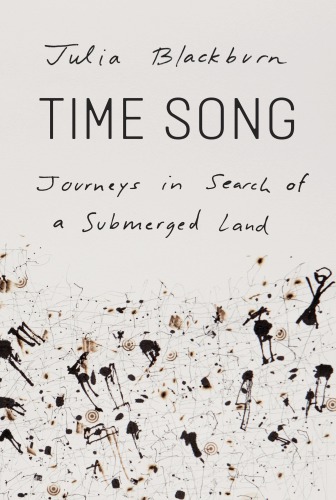
Time Song
Journeys in Search of a Submerged Land
کتاب های مرتبط
- اطلاعات
- نقد و بررسی
- دیدگاه کاربران
نقد و بررسی

April 1, 2019
What people think is lost never entirely leaves, posits novelist and biographer Blackburn (The Emperor’s Lost Island) in this lyrical exploration of Doggerland, the country that until 6,000 years ago connected Britain with mainland Europe and now lies under the North Sea. Alternating chapters of prose with prose-poems she calls “time songs,” Blackburn creates an impressionistic picture of a place that is both gone and yet still there, its landscape partly intact beneath the waves. “Trying to see through the fact of absence is what this book is mostly about,” writes Blackburn, who also reflects on the recent loss of her beloved husband. Along the way, she visits with experts on Doggerland—related to the Danish word dag, meaning “dagger,” which also gave the dogwood its name—and hikes through countryside near her home in England and elsewhere that resembles what Doggerland may have been like: icy in the winter, marshy in the summer. Like one of the scientists she meets on her quest, Blackburn believes life is a process that “does not begin with birth or end with death,” but “is a trajectory in which there is no finite end.” This sweet, sad book will leave its readers meditating on loss and timelessness.

May 15, 2019
A search for a lost land reveals secrets of prehistory. In the early 1990s, archaeologist Bryony Coles began research to find evidence of a submerged land bridge connecting Britain to Europe, a place she named Doggerland, styling it after other lands (England, Jutland) abutting the sea. Coles is one among many individuals--paleontologists, archaeologists, anthropologists, geologists, fishermen, and fossil collectors--who shared their insights with Blackburn (Threads: The Delicate Life of John Craske, 2015, etc.) as she engaged in a quest to discover Doggerland's past. Doggerland, she discovered, had been a solid landmass from 2.6 million years ago until melting ice and rising seas completely flooded it around 7,000 years ago. From a plethora of fossils--one researcher collected 150,000 kilos of bones, including 70,000 mammoth teeth--the author learned that early in its history, the area had been a savannah, where mammoths, woolly rhinos, and mastodon elephants grazed. As the climate became colder, the landscape was transformed into tundra, to which the mammoth, with its shaggy covering of hair, was well adapted to survive. A dramatic temperature rise 11,500 years ago produced marshes, swamps, rivers, and woodlands and an enormous density and diversity of wildlife. Artifacts offer proof that the land was inhabited, as well, by humans: Neanderthals hunted and gathered until they abruptly disappeared, victims of violent and dramatic confrontations." They lived in settlements, able to form "a sedentary society," Coles told Blackburn, "because the food they needed for survival came to them." The author creates a lyrical narrative of her journey: deft portraits of the men and women she interviewed and poetic reflections on her discoveries, her husband's death, and the infinity of the past. Her narrative is more poetic, surely, than her 18 "Time Songs," whose rhythm and language are decidedly proselike. The book is illustrated with maps, and the songs are accompanied by pen-and-ink drawings, some evoking the fanciful style of Paul Klee, by Spanish painter Brinkmann, Blackburn's longtime friend. A sensitively rendered chronicle of discovery.
COPYRIGHT(2019) Kirkus Reviews, ALL RIGHTS RESERVED.

Starred review from July 1, 2019
Award-winning author Blackburn (Old Man Goya) brings her creative energy to the lost prehistoric worlds of northwestern Europe. Doggerland, a region now submerged beneath the North Sea, once connected Britain to continental Europe. Prehistoric humans, mammoths, and other Ice Age denizens once roamed over a landscape that appeared and disappeared over hundreds of thousands of years. In addition to the content, which itself is unique and rarely explored, the book's presentation is extraordinary. There are poems about natural processes and human evolution; seemingly tangential, personal narratives that arrive at an illuminating point; and informational yet highly readable scientific discussions, such as a vivid description of a Netsilik Eskimo hunting party. The text flows like water, almost dreamlike. Brinkmann's stylistic drawings, scattered throughout, resemble cave art. A series of Doggerland maps follows through the work, a chronological presentation illustrating the unrecognizable topography of 18,000 years ago up to the more familiar territory of 7,000 years ago. Those seeking a more straightforward work on the Ice Age may prefer Jamie Woodward's The Ice Age, but Blackburn offers a visionary, memorable account. VERDICT Exploring natural history as part of humanity, this unique, artistic, and original work will be enjoyed by a wide range of readers. [See Prepub Alert, 2/18/19.]--Jeffrey Meyer, Mt. Pleasant P.L., IA
Copyright 2019 Library Journal, LLC Used with permission.

July 1, 2019
Brexiteers notwithstanding, Great Britain was once connected to continental Europe by land that sank beneath the North Sea about 6,000 years ago. Called Doggerland, it's been dragged to yield some animal remains, plus prehistoric tools and weapons. Blackburn, a multi-award-nominated author of fiction and nonfiction, became intrigued by Doggerland after her husband's death and here shares her encounters with paleontologists, archaeologists, fishermen, and others about her new enthusiasm.
Copyright 2019 Library Journal, LLC Used with permission.

























دیدگاه کاربران